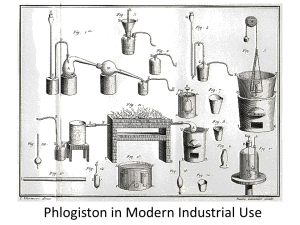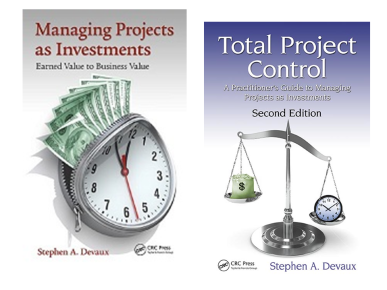After a cold spring, weather in Boston is finally nice and so I’ve decided to offer readers another little Weekend Puzzler, this time on earned value and DIPP analysis.
But before I explain the puzzle, I want to mention that I was interviewed on Blog Talk Radio by Elaine Jackson (a fellow Bajan!) of Holistic Consulting Project Management. The topic, which you can listen to here, was “Financial Success of Projects Using the Critical Path Drag Method.” It runs about half an hour.
Earned Value and DIPP Puzzler
First, let me say that, as a teacher, it has always been my belief that every exercise, quiz and test should teach as well as evaluate. So that is how this Puzzler is intended.
Next, here are the earned value and DIPP terms and their formulas that you will need in answering the questions.
*****
PV (also known as BCWS) is Planned Value and is the earned value baseline (and should be called PC for planned cost). It is the cumulative budgets for the activities as scheduled.
EV (also known as BCWP) is Earned Value, the cumulative budgets for the activities that have been performed at any given point of project progress.
AC (also known as ACWP) is Actual Cost, what it actually cost to perform the work that has been performed.
CPI is the Cost Performance Index or EV ÷ AC, the ratio between the budgets and the actual cost for work performed. It is used for trend analysis in estimating the project’s Cost Estimate-at-Completion (Cost EAC).
Cost EAC is Cost Estimate-at-Completion, or what the project will cost if current spending trends continue. It is calculated using the formula: Cost EAC = Budget at completion ÷ CPI.
Cost ETC is Cost Estimate-to-Complete, or how much more the project will cost from any given point onwards, subtracting sunk costs. It is calculated using the formula: Cost EAC = (Budget at completion ÷ CPI) – AC.
SPI is the Schedule Performance Index or EV ÷ PV, the ratio between the budgets for the work actually performed so far and the budgets for the work scheduled to have been performed to this point. It is used for trend analysis in forecasting the project’s Estimated Duration. (NOTE: The way SPI is currently used, it is often distorted due to float and other factors. These, along with corrective procedures are described in detail in my book Managing Projects as Investments: Earned Value to Business Value. But for purposes of this Puzzler, we will assume the SPI to be an accurate index.)
EMV is the expected monetary value of the project if completed on a specific date.
Acceleration premium is increase in EMV if a project is completed early.
Delay cost is the reduction in EMV if a project is completed late.
The Planned DIPP (DIPP stands for Devaux’s Index of Project Performance) is the baseline for the ratio between a project’s EMV and its Cost ETC (ignoring sunk costs). It is calculated using the formula: Planned DIPP = $EMV ÷ Planned Cost ETC.
Actual DIPP is the project EMV plus or minus an Acceleration Premium of Delay Cost if it is ahead or behind schedule (usually generated through the SPI), all divided by the Actual Cost ETC (usually generated through the SPI). It is calculated using the formula: DIPP = ($EMV ± $Acceleration Premium OR Delay Cost) ÷ Planned Cost ETC.
DPI stands for DIPP Progress Index. It is the ratio between the actual expected profitability of a project at any given point of progress (taking into account schedule acceleration or delay, but factoring out sunk costs) and the planned expected profitability at that point. It is calculated using the formula: DPI = Actual DIPP ÷ Planned DIPP.
*****
The Phlogiston Mining Project
Our geologists have just discovered that beneath a piece of real estate that we happen to own lies a rich pocket of phlogiston. They have performed tests which show that we should be able to recover 10,000 kilograms of the substance.

Our commodities analysts have informed us phlogiston is currently selling for $10,000 per kilogram on world markets. However, that price is currently trending down at an average rate of $100 each week. Additionally, the Tierra del Fuego Megamine is due to start producing in 50 weeks. That is expected to so increase the availability of phlogiston for industrial use that starting at Week 51, the price of phlogiston is estimated to start falling at $200 per week.
We begin a 50-week project, with a budget of $10 million, to recover the phlogiston and sell it.
Q1. What is the expected value of the 20,000 kg. of phlogiston if we could get it right now?
Q2. What is the EMV of the project with its 50-week schedule?
Q3. What is the EPP of the project with its 50-week schedule and $10M budget?
Q4. What is the Starting DIPP of the project?
Q5. What would be the acceleration premium for each week less than 50 if we could speed up the project?
Q6. What would be the delay cost for every week more than 50 if the project takes longer?
We are now 20 weeks into the project and we have had some problems. We receive the following earned value report:
PV= $4M
EV = $3M
AC = $5M
Q7. What is our current CPI?
Q8. What is our current Cost EAC based on the CPI?
Q9. What is our current Cost ETC based on the CPI and AC?
Q10. What is our current SPI?
Q11. What is our current Estimated Duration based on the SPI?
Q12. What is our current estimated schedule delay based on the SPI?
Q13. What is our current expected delay cost based on the SPI?
Q14. What was our project’s Week 20 Planned DIPP?
Q14. What is our project’s Week 20 Actual DIPP?
Q15. What is our project’s current DPI?
Q16. What is our project’s current EPP?
Q17. If we have all this data (including EMV and the value/cost of time!), what are some of the things we might do to improve the situation?
Q18. If there is nothing we can do to pull in the schedule, but there are also no other issues such as opportunity costs, project termination costs, salvage value, etc., should we terminate the project at Week 20?
Scroll down below my sig for the answers.
Fraternally in project management,
Steve the Bajan
*****
ANSWERS
Q1. What is the value of the 20,000 kg. phlogiston if we could get it right now? [$10,000 * 10,000kg. = $100M]
Q2. What is the EMV of the project with its 50-week schedule? [$100M – (10,000kg * 50W * $100) = $100M – $50M = $50M]
Q3. What is the EPP of the project with its 50-week schedule and $10M budget? [$50M – $10M = $40M]
Q4. What is the Starting DIPP of the project? [$50M ÷ $10M = 5.00]
Q5. What would be the acceleration premium for each week less than 50 if we could speed up the project? [10,000kg * $100 = $1M]
Q6. What would be the delay cost for every week more than 50 if the project takes longer? [10,000kg * $200 = $2M]
We are now 20 weeks into the project and we have had some problems. We receive the following earned value report:
PV= $4M
EV = $3M
AC = $5M
Q7. What is our current CPI? [$3M ÷ $5M = .60]
Q8. What is our current Cost EAC based on the CPI? [$10M ÷ .60 = $16.67M]
Q9. What is our current Cost ETC based on the CPI and AC? [$16.67M – $5M = $11.67M]
Q10. What is our current SPI? [$3M ÷ $4M = .75]
Q11. What is our current Estimated Duration based on the SPI? [50W ÷ .75 = 66.67W]
Q12. What is our current estimated schedule delay based on the SPI? [66.67W – 50W = 16.67W]
Q13. What is our current expected delay cost based on the SPI? [16.67W * ($200 * 20,000kg) = 16.67W * $2M = $33.33M]
Q14. What was our project’s Week 20 Planned DIPP? [$50M ÷ ($10M – $4M) = $50M ÷ $6M = 8.33]
Q14. What is our project’s Week 20 Actual DIPP? [$16.67M ÷ $11.67M = 1.43]
Q15. What is our project’s current DPI? [1.43 ÷ 8.33 = .17]
Q16. What is our project’s current EPP? [$50M – $33.33M – $16.67M = $0]
Q17. If we have all this data (including EMV and the value/cost of time!), what are some of the things we might do to improve the situation? [A. Crash or fast track activities with lots of drag to pull in the schedule and gain $2M/week. B. Prune optional activities with low value-added and lots of drag and gain $2M/week. As the critical path migrates through other activities, repeat this process until the DIPP is as high as you can get it.]
Q18. If there is nothing we can do to pull in the schedule, but there are also no other issues such as opportunity costs, project termination costs, salvage value, etc., should we terminate the project at Week 20? [NO! Our project investment has gone very badly, as the DPI of 17% of expectations at this point tells us. However, the $5M of actual cost we have already spent is GONE, sunk, no matter what. This project now requires investment of $11.67M more with an EMV of $16.67M. If we finish the project, we will be $5M better off than if we cancel it. What this means is that any time the Actual DIPP is well above 1.00 (and it’s currently 1.43), we are better off finishing it than cancelling it UNLESS there are other factors that would offset a DIPP that suggests a return of 43% in 30 weeks on every future dollar invested.]




